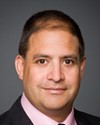The federal government's role is on the new construction, so it is putting money in. Whether it's through the affordable housing initiative, through the stimulus measures, that's money for new construction. In terms of the operating costs, the intent is for those to be covered either by the groups themselves through other equity contributions or through the territories. So the federal government, not including the territories, has a cap of about $75,000 capital that it will put in. When you put in that capital, it's cost-matched by a province; $150,000. In most of the rest of Canada that can get you a pretty good affordable unit. Then the ongoing costs are fairly reasonable and can be carried by the revenues in terms of rent geared to income, what a tenant would be expected to pay.
In the territories there are none of those caps on the federal dollars, so that $200 million can be used and there is no application of that cap. So they can use more federal dollars for the capital contribution. So that would lessen some of the ongoing operating costs.




